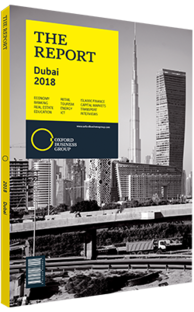Innovative investment in Dubai to change the face of transport
In late February 2017 Dubai’s Roads and Transport Authority (RTA) announced a five-year development strategy for the emirate, covering the 2017 to 2021 period. The plan, which includes more than 30 individual projects and initiatives, is largely aimed at turning the emirate into a global leader in the development and implementation of autonomous transport technology. One of its cornerstones is an international competition that will seek to attract the world’s top drone automobile, aircraft and ship manufacturers to compete for large-scale government contracts.
The five-year plan also involves building up Dubai’s legislative environment regarding drone usage, an objective that is widely considered to be as central to the widespread use of drones as competition over big-ticket deals. “Most of the autonomous technologies across the world are in a trial phase now, and nobody is sure when these can be put into practice,” Ahmad Hashem Behroozian, CEO of the RTA’s Licensing Agency, told local media at the time of the authority’s announcement. “So, what we are trying to do is to make the city ready for all future technologies by developing safety standards and introducing relevant legislation, as well as building the required infrastructure.”
In Detail
The RTA’s five-year strategy follows on the ongoing effort to turn Dubai into a smart city. Previous initiatives in support of this goal have included the development of digitally enhanced national IDs, state-operated databases to enhance service provision, and the collection and collation of new data on the emirate, its citizens and visitors, and their daily activities and interactions. Additionally, a key objective of the plan is the conversion of 25% of Dubai’s road traffic into autonomous traffic by 2030. This goal will be met largely through a focus on converting the emirate’s taxi and bus fleets to self-driving vehicles. Other components of the plan related to road transport include initiatives aimed at expanding pedestrian crossings and adding information kiosks throughout the city. These efforts build on a set of recently completed projects aimed at modernising the city’s road system, including the installation of interactive screens and Wi-Fi in taxis, smart car rentals with pay-by-the-minute capabilities, mobile-based trip planners, taxi-hailing apps and smart bus shelters, among many others.
Sky High
In September 2017 Dubai took a noteworthy step towards its goal of becoming one of the first cities to significantly adopt driverless vehicle technology when it ran its first trial run of the Autonomous Air Taxi. The RTA, in a partnership with the German helicopter firm Volocopter, flew the crewless vehicle 200m high during the initial experiment. When operational, the taxis will be able to seat one to two people and fly for a maximum of 30 minutes with a top speed of 100 km per hour. It is estimated that the technology will reduce costs by 44%, saving DH22bn ($5.9bn), increase productivity by 13% and reduce road accidents by 12%.
Coming Into Focus
In April 2017 the RTA also announced that it had partnered with US technology and car transport firm Uber to develop flying cars by 2020. Jeff Holden, Uber’s chief product officer, announced that according to the company’s estimates a flying car could cost around $1.32 per passenger mile to operate, which is equal to Uber’s discount UberX service.
Another major project currently under way is the development of the world’s first functional hyperloop network. DP World, Dubai’s government-controlled global ports operator, recently invested $50m in Hyperloop One, a US-based firm developing technology to send passenger and cargo pods down low-pressure tubes at high speeds. Though the project is still in the initial stages, a hyperloop line connecting Dubai and Abu Dhabi could theoretically reduce the travel time between the two cities from the current one hour by car to about 12 minutes. Hyperloop One is working with the authority and other government entities to explore how the network might function in the emirate, particularly in relation to existing transport networks.
You have reached the limit of premium articles you can view for free.
Choose from the options below to purchase print or digital editions of our Reports. You can also purchase a website subscription giving you unlimited access to all of our Reports online for 12 months.
If you have already purchased this Report or have a website subscription, please login to continue.

